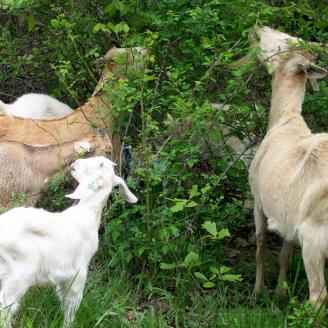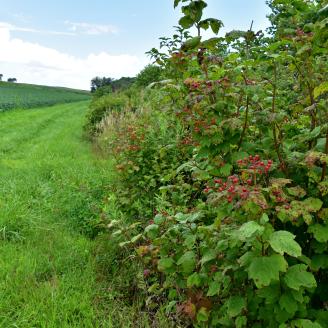
Through practices such as tree planting, forest management planning, and habitat enhancement, NRCS aims to help improve forest health, increase biodiversity, and enhance the resilience of forests against threats like pests and diseases.
Forests and woodlots are constantly changing. To get the most out of your property to meet your wildlife, recreational, aesthetic or economic goals, some type of regular management will be necessary. If you haven’t been managing your woods, consider starting today. Getting the most out of your woods can be a challenge on your own. Fortunately, there are many resources available to help you.
Forest management is providing your forest with the care it needs to remain healthy and provide the benefits you desire. Forest management considers all parts of the forest community: soil, water, plants, animals, birds, and air, as well as the trees. The goal of forest management is a healthy, sustainable forest that accommodates any number of uses.
Popular Iowa Forestry Practices

Brush Management
Brush management techniques can be used in forestland to help landowners control invasive
woody species problems such as bush honeysuckle, autumn olive, and multiflora rose.
Woody invasive species are very prolific at seed production and sprouting, and are mostly
shade tolerant. These characteristics give them a distinct advantage over native species and oftentimes, if not addressed completely, can take over and even replace native plants, trees
and shrubs.

Forest Stand Improvement
Use of Forest Stand Improvement techniques help landowners manage species composition,
stand structure, and stocking by removing selected trees and understory vegetation.
Management practices can directly:
• Increase forest product quantity and quality, and restore natural plant communities
• Improve vigor; initiate forest stand regeneration
• Achieve desired crop tree stocking and density levels and increase carbon storage
• Reduce potential damage from wildfire, pests, and moisture stress
• Improve aesthetics, recreation, and wildlife habitat

Prescribed Burning
Burning can be an effective tool to meet specific forestland and site preparation management
objectives. Frequency and intensity of burning should be closely assessed and weighed
against resource concerns and management objectives of the site.
Under proper conditions, prescribed burns can:
• Achieve proper site preparation • Improve wildlife habitat
• Reduce wildfire hazards • Enhance seedling production
• Remove slash and debris • Restore and maintain ecological sites
• Control undesirable vegetation and plant diseases

Riparian Forest Buffer
Riparian Forest Buffers consist predominantly of trees and shrubs planted adjacent to and
upslope from permanent streams, lakes, ponds, wetlands and areas with groundwater
recharge.
Riparian Forest Buffers are created for various purposes and benefits which can:
• Create shade to lower water temperatures for aquatic organisms and create
camouflage for predatory fish
• Create wildlife habitat and establish wildlife corridors
• Reduce sediment, organic material, nutrients and pesticides in surface runoff
• Provide a harvestable crop of timber and fiber
• Provide protection against scour erosion within the floodplain
• Restore natural riparian plant communities

Tree/Shrub Establishment
Trees/Shrub establishment introduces woody plants to an area by planting seedlings or
cuttings, direct seeding or natural regeneration. Once established, woody plants provide
wildlife habitat, potential forest products, and long-term erosion control. They also improve
air and water quality, sequester carbon, and enhance area aesthetics.
Considerations include:
- Suitable species selection
- Size and quality of stock/seed
- Type and purpose of stock
- Appropriate site preparation needs
- Planting density/rate for intended purpose
- Continued control of plant/weed competition following establishment
- Cover crop needs

